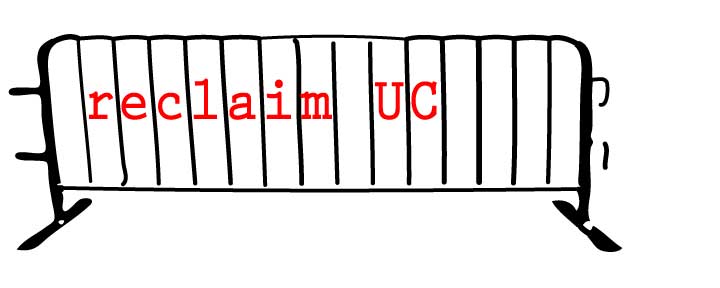Yesterday, Anticut 3 marched through downtown Oakland, stopping outside the jail and chanting so loud -- "Inside! Outside! We're all on the same side!" -- and generally making so much noise that prisoners inside could be heard banging on the windows in response. Expect a reportback soon, but for now here's the media's take:
OAKLAND -- A vociferous but peaceful protest turned heads Friday evening as a group of about 100 marched through downtown Oakland in solidarity with Pelican Bay State Prison inmates who are on a hunger strike and the victim of Sunday's BART shooting.Also, be sure to check out the statement that was handed out during the march:
Now, finally, the money is gone. The world has run out of future, used it up, wasted it on the grotesque fantasies of the rich, on technologies of death and alienation, on dead cities. Everywhere the same refrain, the same banners and headlines: there is nothing left for you. From the US to Greece, from Chile to Spain, whatever human face the State might have had: gone. The State is no longer a provider of education or care, jobs or housing. It is just a police force, a prison system, a bureaucracy with guns. . .
Sometimes, maybe, we get treated to some political theater: faked expressions of concern or outrage from the puffy, grimacing faces. But the result is always the same – in Oakland, in Sacramento, in Washington, in the offices of the IMF – whatever the owners of wealth want, they get. The rest of us are sacrificed on the altar of the bottom line.
No money on which to retire after a lifetime of crushing work. No money to go to college. No money for the grade schools and high schools, which every day look more and more like prisons. No money for the people maimed, sickened and driven insane by this unbearable society.
We could go through the new California budget line by line, but you basically already know what it contains. It’s not a budget but a bludgeon. Every line says the same thing: Fuck you. Die.
There is no money. And yet, still, we live in a society of vast, almost obscene wealth: blocks of homes sit empty, mountains of luxury goods glut the shopping emporia, unused factories and equipment gather rust. All of it under the spell of a strange collective hallucination called “property.” All of it protected by cops and the threat of prison. . .
Yes, the money is gone and there is no future. No future for capitalism. All attempts at reform are now as absurd as making home repairs while the rest of the house is on fire.


 Yesterday, the Movimiento por Justicia del Barrio briefly
Yesterday, the Movimiento por Justicia del Barrio briefly 
